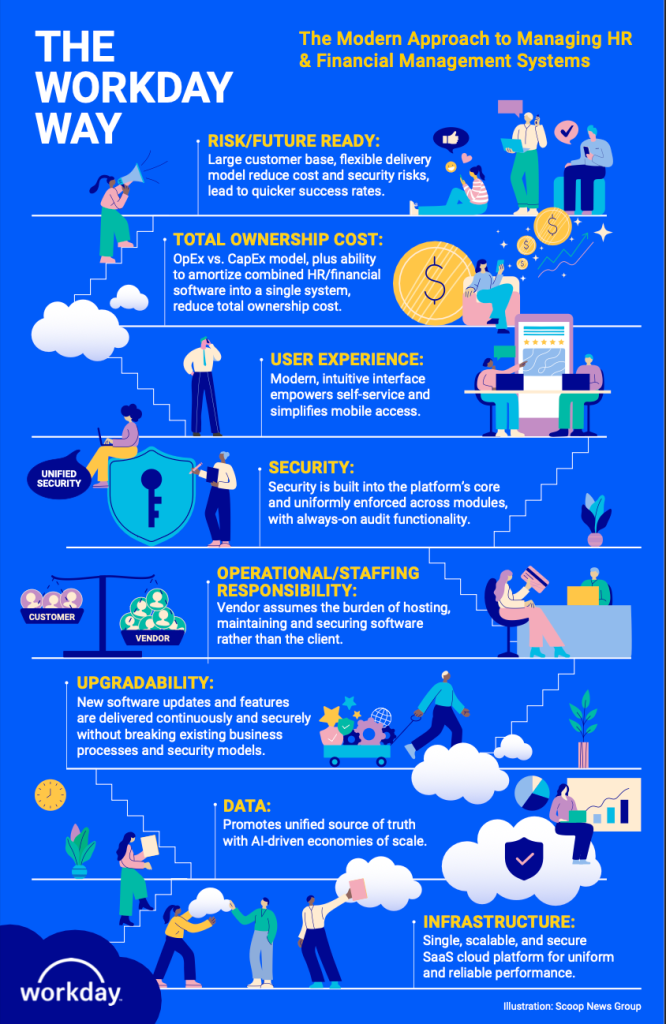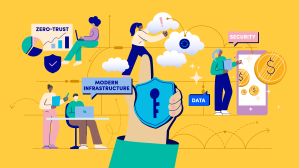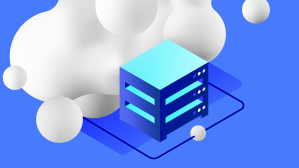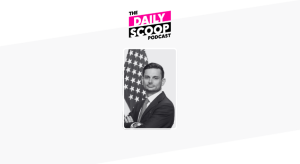- Sponsored
- Insights
From technical debt to actual ownership: The case for a SaaS-first approach

Here’s a familiar refrain: “But we’ve always done it this way.” Here’s another: “Too many people depend on our current systems to risk switching to a new one.” That mindset has become a protracted barrier to progress for many federal agencies — especially when improving their HR and financial management systems.
For decades, agencies have relied on custom platforms and a patchwork of disparate applications that, while familiar, create a mountain of technical debt. These systems require large, dedicated development teams to maintain, and they often trap agencies in costly upgrades or disruptive “rip and replace” cycles to add new features.

With increased pressure to be more efficient, secure and adaptable, this “old way” is no longer sustainable. Federal leaders are embracing a new approach by moving to a true software-as-a-service (SaaS) model, where a single, unified platform replaces fragmented and siloed systems. This shift allows agencies to operate more economically and efficiently, empowering them with a new level of ownership and control. Workday’s SaaS model provides one example of how agencies can achieve this.
Key to this modernization is the shift from coding to configuration. With Workday, for example, agency IT departments can concentrate on the system’s configuration, rather than relying on third parties to perform complex customizations or on large development teams to maintain and upgrade features.
This modern, no-code, configurable platform approach delivers three primary benefits that directly address pain points many agencies currently face:
- Continuous Innovation and Upgradability: Because Workday’s customers all have access to the same software version, which gets updated twice a year, agencies avoid disruptive “rip and replace” or custom-coded upgrades. Instead, new features and updates are delivered securely and seamlessly, with agencies given a six-week window to test them in a sandbox environment. Configurations and changes made by agencies are update-safe and persistent. This continuous upgrade cycle guarantees the platform is always current, allowing agencies to adopt new features over time and reducing their reliance on third-party implementers for custom upgrades. It also ensures the platform can evolve with a changing mission and regulatory landscape.
- Reduced Cost and Risk: It offers a single core system of record that, in Workday’s case, manages both HR and financials. This consolidates separate systems and removes the costs and risks of integrating multiple applications. Instead of a large, upfront capital expense (CapEx), the subscription-based model is an operating expense (OpEx) that covers hosting, maintenance, and security. Importantly, the vendor assumes the staffing and operational responsibilities, reducing the burden on the agency. This lowers the total cost of ownership and enhances security, as security features are integrated into the platform’s core and consistently enforced across all modules. For instance, the Workday platform helps decrease the paper workload for personnel action requests by providing automated processing for SF-50s and SF-52s, helping agencies to minimize risk by automatically ensuring compliance with legal authorities.
- Modern User Experience: Many federal systems are notoriously outdated, with some still relying on decades-old COBOL-based technology. Modern platforms, including Workday, offer an intuitive, consumer-grade interface. The user experience is consistent for federal and commercial customers, ensuring agencies have access to the same high-quality interface as leading companies. This user-friendly design reduces training needs and provides self-service features and mobile access, boosting user adoption and employee success. Additionally, Workday’s cloud-native architecture allows it to easily incorporate new technologies, such as agentic AI, without requiring a complete re-implementation.
Ultimately, this new way to manage HR and financial management systems offers substantially greater ownership and control of your data and processes. A unified platform promotes a single source of truth, enabling agencies to make better, data-driven decisions in real time. By shifting the burden of hosting, maintenance and security to a trusted partner like Workday, agencies can free their IT staff to focus on delivering greater value to managers and employees and ultimately to the mission. It’s time to move beyond the “old way” and embrace the “new way” — a more flexible, efficient, forward-thinking approach to managing government operations.
James Herubin is Senior Enterprise Architect, Federal Market, at Workday.
Learn more about how Workday Government Cloud helps agencies enhance the employee experience for government workers while adhering to strict security and compliance standards.






